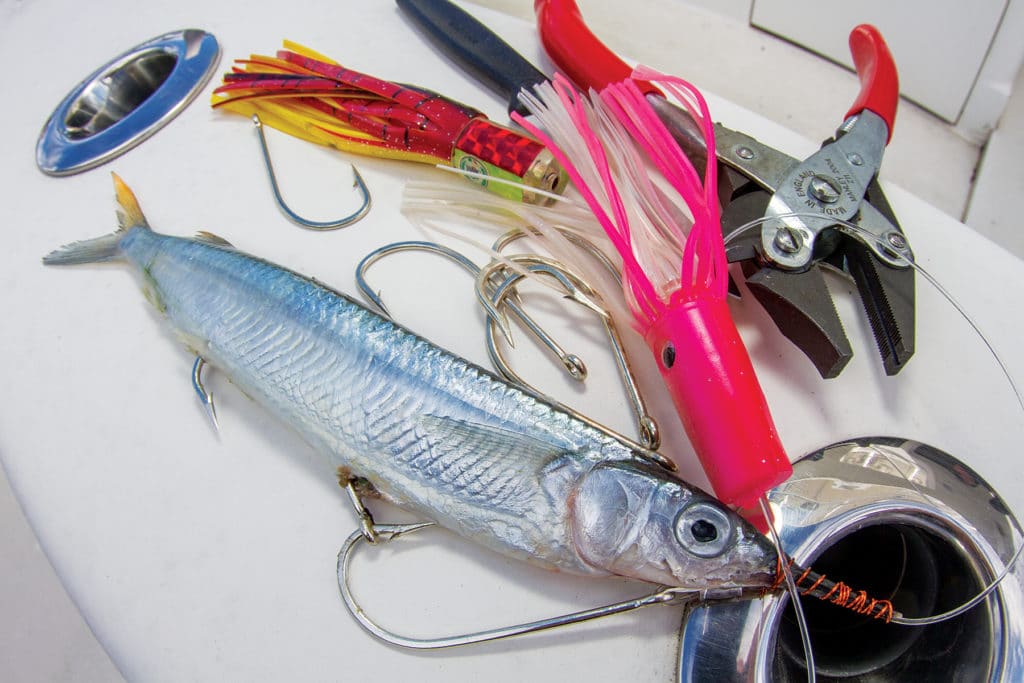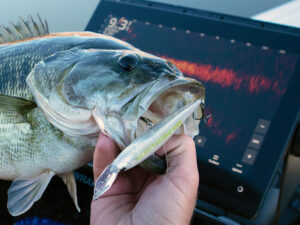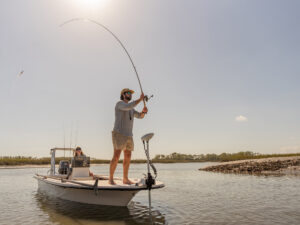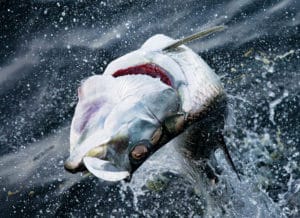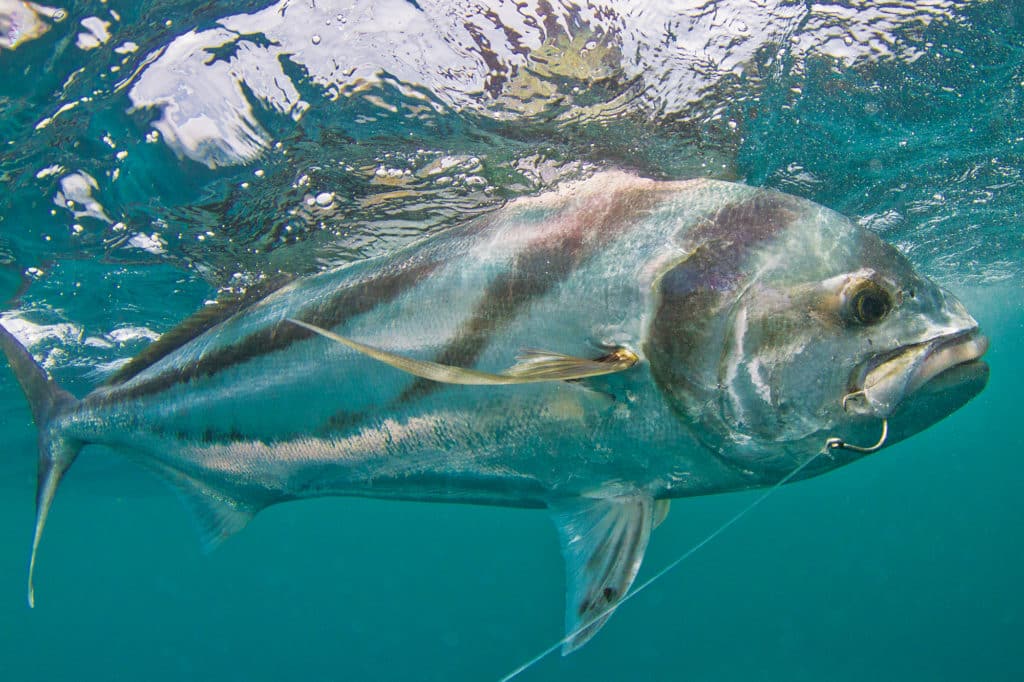
Hook Choice
The bait hook that catches an amberjack in Florida is not the same one anglers tie on for roosterfish off Baja or yellowtail in California.
Or is it?
Most anglers agree that bait size determines hook size, so if roughly the same size baits are available across the continent, are hook style and size all that important? The answer is a resounding yes. Because techniques vary from port to port, top anglers have modified and refined rigs that require specific styles of hooks. One trend that’s become a staple with many rigs is the utilization of circle hooks. More and more, anglers are picking circle hooks over J hooks.
I reached out to a diverse group of pro anglers and captains to learn their favorite hook styles when fishing live or dead natural baits.
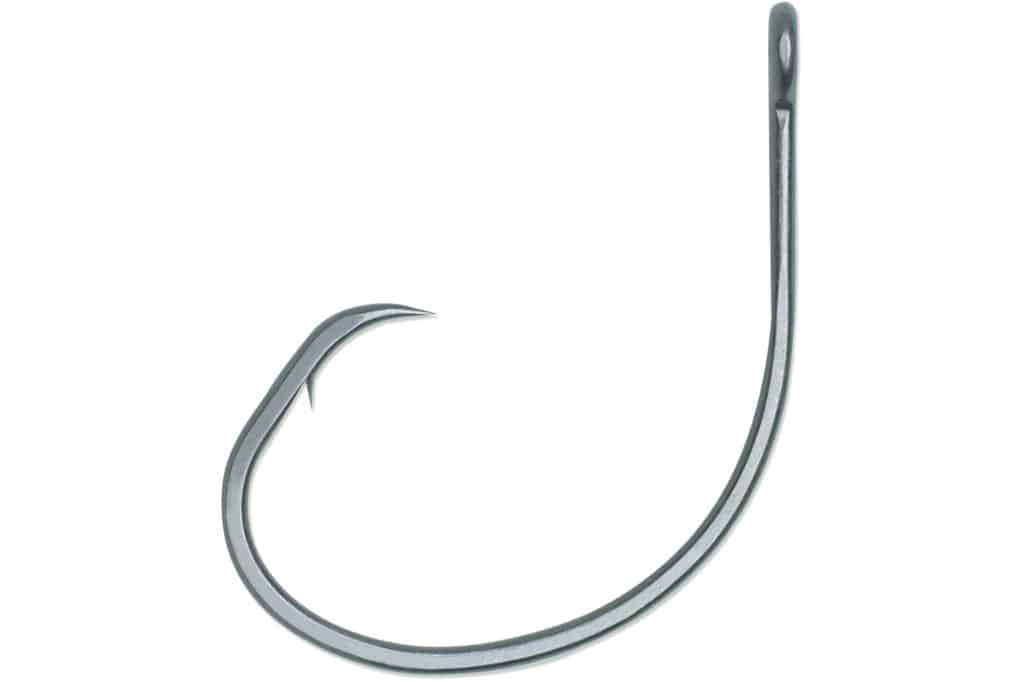
Mid-Atlantic Bottomfishing
Richard DeMarte, a pro angler and outdoors writer from White Plains, New York, uses only circle hooks to fish his waters in and around Long Island Sound, even replacing treble hooks on his lures. He’s found that circles dramatically reduce damage to the fish and don’t adversely affect hookup rates.
“Bottomfishing for tautog, porgies and sea bass, I make up rigs with VMC circle hooks from sizes 1/0 to 4/0,” says DeMarte. “Top baits are Asian and green crabs for blackfish, and spearing [Atlantic silversides], squid or strip baits for sea bass.”
In addition, DeMarte bottomfishes for striped bass and bluefish with VMC 7/0, 8/0 or 9/0 circle hooks and cut bunker (menhaden) chunks in waters from 2 to 60 feet. “By using circle hooks, only three of the 1,300-plus stripers I’ve landed were gut-hooked and not able to be revived and released,” he says.
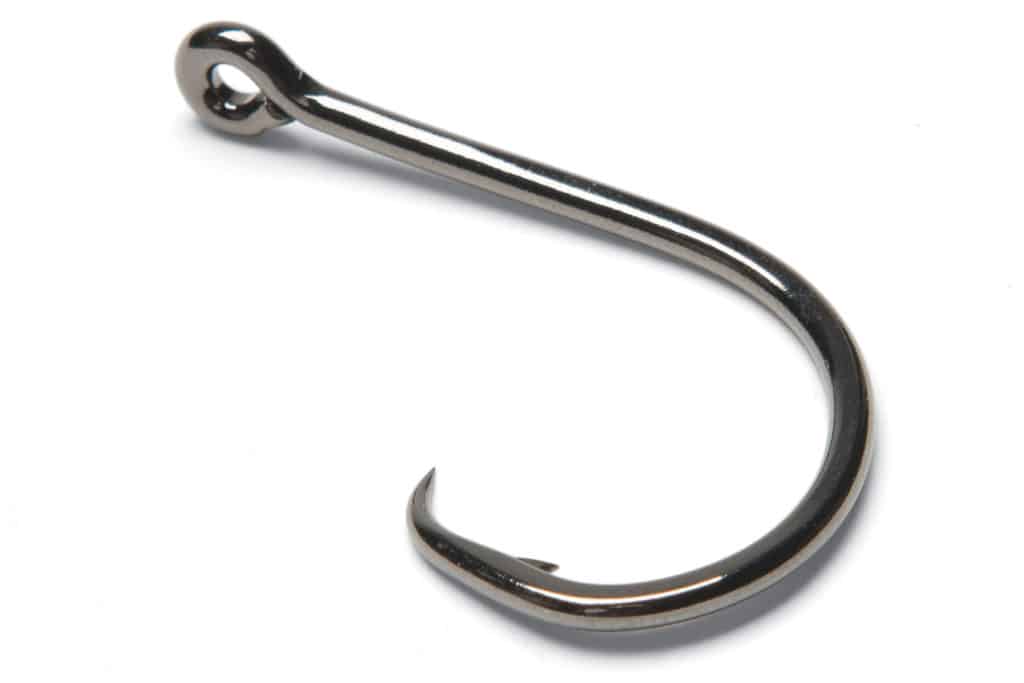
Chunking For Tuna and Stripers
When Capt. Bob Cope chunks for tuna offshore of Cape May, New Jersey, he uses only circle hooks because he’s learned the hookup-to-landing ratio is much better than with J hooks. Specifically, he prefers to use 4/0 to 6/0 4x-strong Gamakatsu Octopus circles (209416).
However, when trolling, Cope prefers J hooks on his rigged baits as well as his lures.
“To use circles when trolling, the angler must set the drag very light and slowly push the lever home after the bite,” he says. “It’s not an easy task for the average customer on a charter. With J hooks trolling at 6 knots, the fish is either on or it’s not.”
For chunking baits to stripers or tossing clams at fat black drum, Cope fishes 8/0 Gamakatsu Octopus circles (208418) on fish-finder rigs. “I’ve found this is the best option because there’s never the question of when to set the hook,” he says. “All that is needed is to wait for the rod to fold over and just turn the handle. You’ll land over 90 percent of the fish that bite this way.”
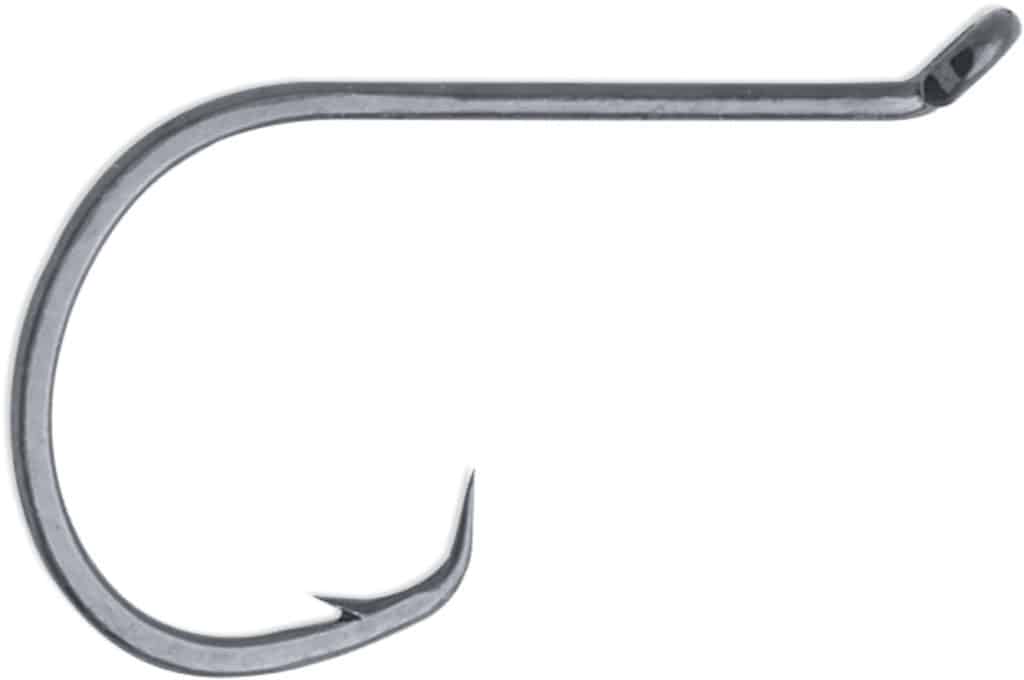
South Atlantic Popping Corks and More
“When fishing shrimp and minnows under a popping cork for specks and reds, I prefer the VMC 7384 Sport circle, matching the bait size with the hook,” says Capt. Gary Dubiel, of Oriental, North Carolina. “The thin gauge allows the bait to swim well and penetrates well with lighter-action rods. I also Carolina-rig the 7384 circle for flounder.”
The VMC Sport circle has a bent-out eye for easy leader snells to the hook. When Dubiel isn’t using popping corks, he rigs with VMC Tournament circles starting in the 3/0 size.
“We fish weighted cut-bait rigs for reds, and I opt for a 7387 Tournament circle,” he says. “For adult redfish, I use the 8386 Tournament circle in 10/0.” The 8386 Tournament circle is very strong and large enough for big chunks of mullet and menhaden; plus its shank is in-line, making it easier to release fish healthy.
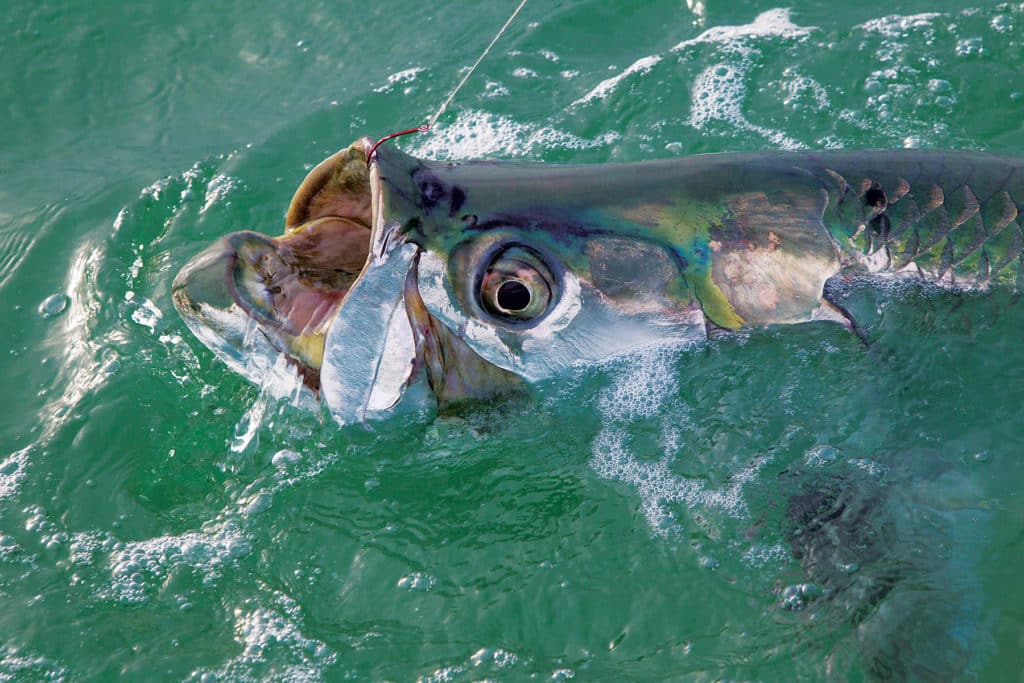
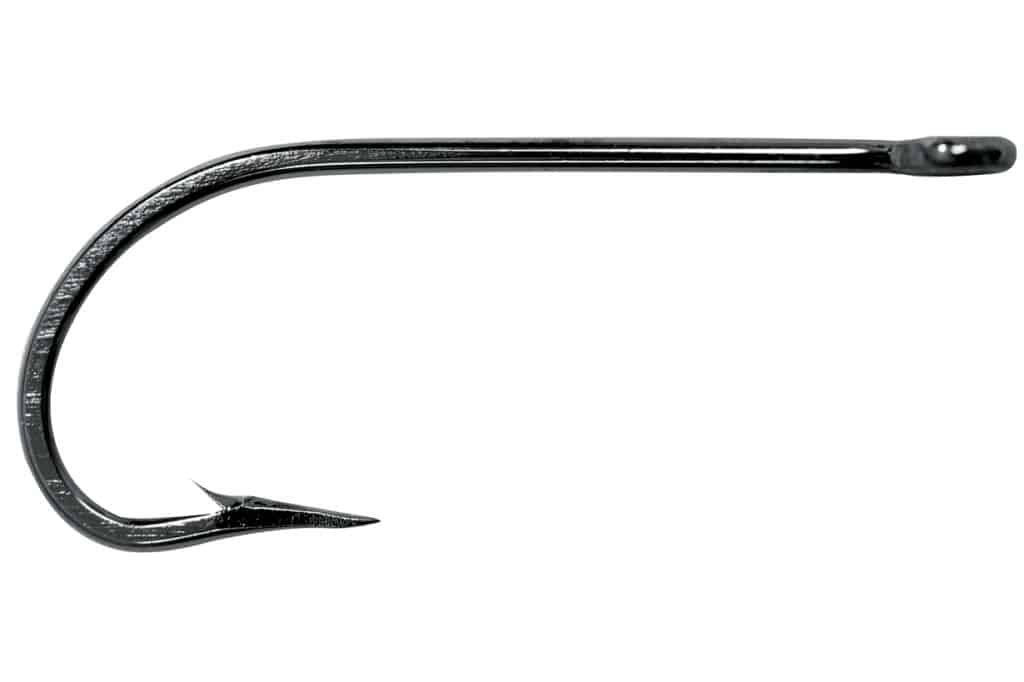
Trolling Dead Baits
One technique that still incorporates J hooks extensively is trolling natural dead baits such as ballyhoo.
“Our go-to hook here in the Florida Keys is the Mustad 3407 BN 7/0 [J hook] for rigging medium-size ballyhoo, and the 8/0 for the larger horse ballyhoo,” says Capt. Jack Carlson, of Marathon. “BN stands for black nickel, the coating on the hook. A Super Strong [SS] model is available if using higher-pound-test main line or targeting larger game fish.”
This classic O’Shaughnessy forged hook provides numerous benefits.
“It’s a long-shank hook, and when a fish has it in the corner of its mouth, there is less chance to chafe the leader,” says Carlson. “Also, the hook sits in the perfect location, toward the mid to back section of the ballyhoo, when rigging through the gills. This hook placement prevents losing short strikes.”

Gulf Coast Slow-Trolling
“When targeting yellowfin tuna early in the year, I tie on a Trokar TK5 non-offset circle in the light-wire model,” says Capt. Mike Ellis, of Venice, Louisiana. “You just can’t use a heavy-wire hook for yellowfin when the baits are 3 to 5 inches long. I vary the size of the hook depending on the size of the bait.”
In fact, Ellis prefers lighter-wire hooks so smaller baits swim better and live longer while trolling. “I will have a few hooks open up at times and may lose a fish or two, but I feel like the lighter hooks get way more bites, so it’s an acceptable gamble,” he adds.
On the days when the fish are not cooperating, Ellis switches to a 3/0 Trokar TK7 Extreme Live Bait hook and fishes with the rods in gear. “That seems to hook any finicky short-striking tuna,” he says.
As the year progresses and the size of the baits grows, Ellis turns to the mid- to heavy-wire Trokars “because they’re wicked-sharp and stick in anything they touch.”
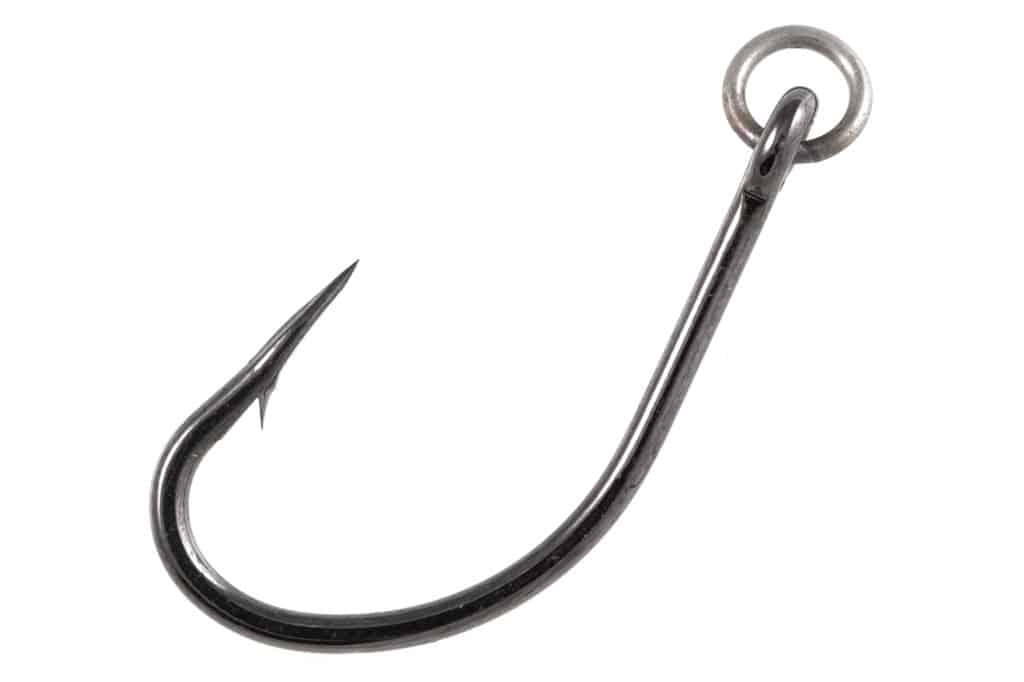
Pacific Drift-Fishing
Bobby Martinez, a tournament angler from Los Angeles, made the most of this year’s El Niño event by catching wahoo, yellowtail and tuna nearshore while fly-lining. Anglers drifting near kelp marked fish on the meter or spotted bait schools, dolphin or large sharks such as hammerheads.
“The fish were as close as 8 miles off LA, with plenty of bluewater close to shore,” he says. “You didn’t have to go to the banks, because clean water was so close to shore.”
The bait size dictated what type of hook Martinez used. For anchovies, often 3 inches long, he prefers 1/0 Owner Ringed Flyliner or Owner Offshore hooks. For fly-lining sardines, he moves to 2/0 to 4/0 hooks. Mackerel were around too, giving anglers the opportunity to make bait most of the summer. Martinez preferred 5/0 to 7/0 Owner Mutu ringed circles when the tuna hit bigger baits.
“For chunking, I like the Offshore hook from Owner,” he says. “It’s offset and really acts like a bait-keeper for the chunk of bait.
“Warm waters, as warm as 77 degrees, brought the fish north,” Martinez explains. “But the warm water has a negative effect on keeping the bait lively, so anglers sometimes had to use smaller and lighter hooks than normal to keep baits alive.”
